- +91 9428399374
- info@mybesttrip.in
Gujarat India
This famous temple of Kali Mata is one of the Shaktipeeths of the mother. Shaktipeeth is called those places of worship where Mata Sati's limbs fell. Pavagadh Mahakali temple built in Panchmahal district of Gujarat is one of the most important places of the state in terms of mythological, historical, religious and tourism. The special thing here is that here is the idol of south-south black mother, which is considered to be of great importance in Tantric worship.
Many historical and religious secrets are associated with the Pavagad Kali temple, which make this place even more special. Some things are connected with Lord Rama's son Love-Kush, then some sage Vishwamitra. Let us now tell you stories related to Pavagadh - hence the name of this place is a story prevalent in the name of Pavagadh-Pavagadh. It is said that it was almost impossible to climb on this inaccessible mountain in a time. Due to the surroundings of the trenches all around, the wind speed too is very high on every side, so it is called Pavagad or the place where the wind is always inhabited. In the foothills of the Pavagadh hills, there is Champanari Nagar, which Maharaja Vanraj Chavda settled in the name of his wise minister.
Pavagad hill starts from Champaner. The machi mansion at an altitude of 1471 feet. To get to the temple, ropeway is available from Machi Mansion. From here, it takes about 250 stairs to reach the temple on foot.
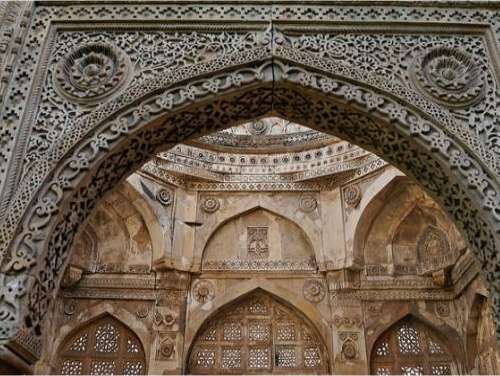
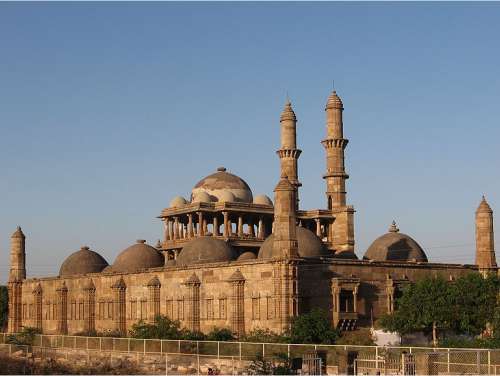
It is said that the Rajput king Vanraj Chavda established Champaner at the foot of Pavagadh in fond memory of his wise minister Champa. Later, the Patai Raval family ruled it and took care of the boundary. The folk tales say that Mahakali assumed the form of a woman and danced in a Garba during Navaratri. The last Patai, Jaisinh watched her with dirty looks. The deity became angry at Jaisinh and cursed him that the town will fall. The Muslim emperor of Gujarat, Mahmud Begada assaulted Pavagadh and won the hill on the boundary in the 15th century.
Patai was defeated and killed. Mahmud Begada shifted his capital from Ahmedabad to Champaner for some time for reasons of diplomacy. He developed the town by constructing buildings such as the fort of Champaner, Uohra mosque, Mandavi, Kirtistambh, the temple of Shalkh, Jama Masjid, Nagina Mosque, and Kevda Mosque. The remains of the Palace of Begada are still found near Vad Talav (Banyan Pond) two kilometers (1.25 miles) away from Champaner by road.
The government has granted many concessions and offered subsidies to the new industries coming up in this area. As a result of it, Halol and Kalol towns near Pavagadh have turned into virtual industrial estates. A film studio at Halol has this added advantage.
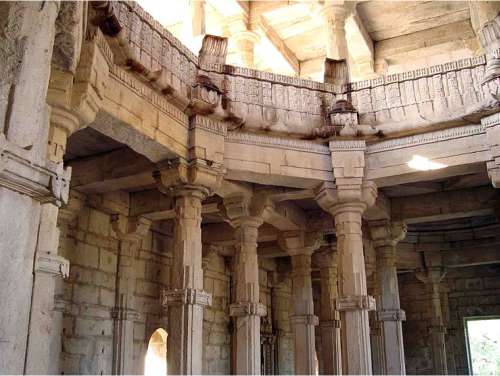
The masjid is a large monument built on a high-rise plinth with a large open courtyard in front. The building was constructed of pure white stone. At the main entrance, the masjid is marked by minarets, which have intricate and elegant carvings; as in other masjids, like Kevada Masjid, it has floral designs in its niches. Three large domes rise over the main prayer hall, above decorative columns and windows. The architecture also features a series of beautifully designed projecting corbels and a projecting cornice, and is decorated with geometric motifsm both inside and outside at the platform level. The main prayer hall rises two storeys and has a balcony.
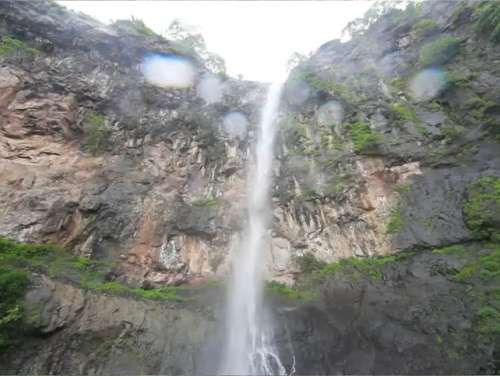
Khuniya Mahadev Waterfall is situated near Pavagadh behind a temple of Mahadev temple. The place is not so popular and very few people visit it.
Khuniya Waterfalls is a must visit during monsoon / the Hindu month ‘Shravan’. Do not take the usual path from where most of the visitors are going to the temple and the waterfall. Instead walk all the way from the water stream and you will enjoy every moment.
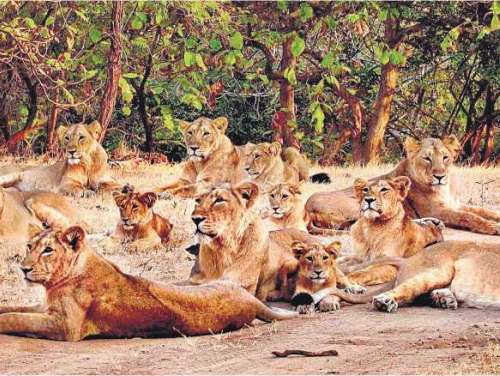
In Gir you touch the history of India before humanity itself. Before monuments, temples, mosques and palaces. Or rather, a history as humanity was emerging, when humans coexisted with lions, before the former had overrun the continent (and the world) and pushed the latter to the brink of extinction.
Many come to Gir because, outside of Africa, it is the only place with wild lions. But to truly experience Gir and the lions, you must explore their natural habitat, with everything from tiny wild birds, not easily seen, but heard singing in the forest canopy, to crocodiles floating in the marsh waters.
Driving around, you are uncommonly aware you are in someone else's territory. You stay in your vehicle because you are in the home of lions, leopards, hyenas, crocodiles; you remember that humans do not rule the world, and however "advanced" we think we are, most of us would not survive very long on our own in a place like Gir.
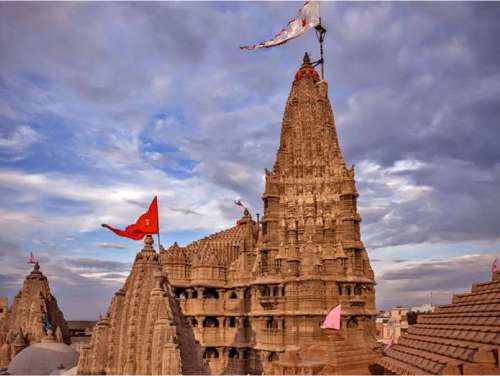
You may begin to recreate in your mind’s eye, a city of gold – Dwarka, the mesmerizing kingdom of Lord Krishna. Ranchhodrai, as Lord Krishna is affectionately called in Gujarat, came to Dwarka from Mathura to build his new kingdom where he would later spend a significant part of his life. Located at the western tip of the Saurashtra peninsula, this town enjoys remarkable importance in Hindu lore. It is the only place considered both one of the four principal holy places (char dham), as well as one of the seven ancient towns (sapta puris) to visit. For this reason, millions of pilgrims and historical scholars have come here over the centuries.
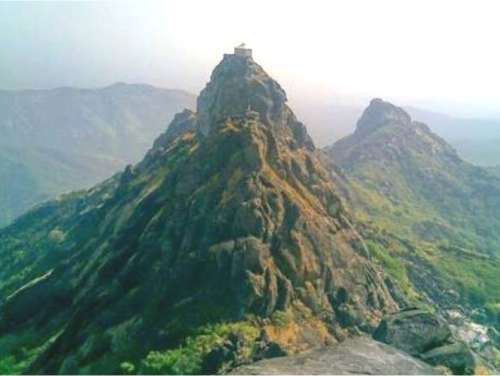
Situated near Junagadh is the ancient hill of Girnar. It is 3672 feet tall and centuries old. Being a major attraction, the hill invites a lot of trekkers. One has to climb 9999 steps to reach the top. The trek starts from Girnar Taleti.
There are about 866 hindu and jain temples surrounding the hill. While on trek, you can come across the Domdar Kund which is said to be the place where the 15th century poet Narsinh Mehta took bath and composed some beautiful hymns. On your walk to the summit, you will encounter many temples for the different sects of Hinduism. The trekkers can start noticing the paranomic view of the Girnar hill after walking 2000 steps.
The last temple on the trek is Kalika temple. An early morning walk to the Girnar hill is a must-experience. It is a must go for the religious as well as the adventurous people.
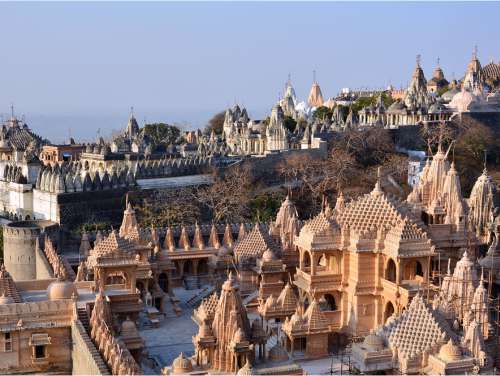
The climb up Shatrunjaya is no doubt the primary activity of a Palitana visit, for Jains and non-Jains alike. The hill is 3 kms from Palitana proper, and the 600 m climb over 3000 stairs to the top of the mountain is an unforgettable experience. Beginning at dawn is recommended, to avoid the mid-day heat. Frequent rest stops to visit temples along the way also help avoid overheating. Many devotees even gather at the highest temples before sunrise, having climbed in the predawn twilight. Be sure to carry enough water and leave a few hours to explore the mountain. Idols are bathed around 9:30am, and pujas tend to be performed around noon. If climbing in the afternoon, be sure to descend with enough time to arrive at the bottom before dark.
The construction of temples of Palitana spanned over a period of 900 years and was structured in two phases. From the 11th to 12th centuries AD as a part of the resurgence of temple building all over India, the first phase of temple architecture was constructed. The second phase followed later, from the 16th century AD onwards. Muslim invaders destroyed some of the earliest temples built in the 11th century AD during the 14th and 15th centuries AD. No one person can be attributed for the construction of these magnificent temples rather it was the effort of the wealthy businessmen who were followers of Jainism.

Established in 1976 in the Bhal region of Saurashtra, the park is located around 42 km from the district headquarters city of Bhavnagar. Hugging the coasts of the Gulf of Khambhat on the south, it is spread over an area of 34.08 km2, which was primarily a "vidi" (grassland) of the maharaja of the princely state of Bhavnagar for hunting the blackbucks with his famous hunting cheetahs. On the northern side, it is surrounded by wastelands and agriculture fields. The national park has been classified as 4B Gujarat-Rajwada biotic province of semi-arid bio-geographical zone.
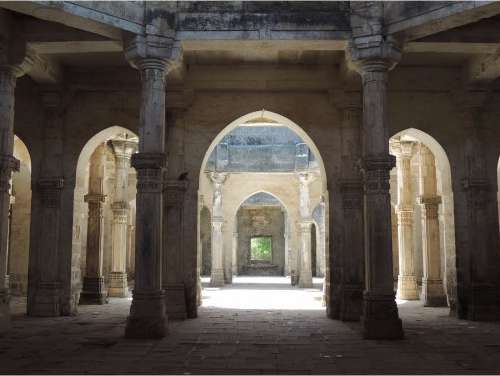
The oldest part of Junagadh, and the center of any visit to the city, is the upper citadel, known as Uparkot. Over 2300 years old, with walls up to 20 m high in some places, Uparkot is what allowed Junagadh to withstand a 12-year siege at one point. It is believed that these caves belong to 1st-4th Century AD and are gilded with beautiful pillars and entrances, water cisterns, horseshoe shaped chatiya windows, an assembly hall and cell for meditation. There is also a 300 ft.-deep moat inside the walls, that reportedly used to be inhabited by crocodiles, so that if any attacker managed to surmount the high fortifications, they would then either be exposed on the upper battlements or fall into the crocodile-infested trench.
Inside the entrance are the insignia of some of Uparkot’s former rulers and temples to Ganesh, Hanuman and Shakti. Closeby are two medieval cannons named Neelam and Manek, forged in Cairo and brought by the Turks who sailed to Saurashtra to aid in defending Diu against the Portuguese.

Mohabat Maqbara striking structure rising from out of nowhere is the mausoleum of Wazir Bahaduddinbhai Hasainbhai, one of the chief nobles in the Court of Nawab Mahabat Khan II of Junagadh. Construction on the yellow-walled complex began in 1878 by Mahabat Khanji and was completed in 1892 by his successor, Bahadur Khanji. Over a decade’s worth of work culminated in elaborate carvings on the buildings’ inner and outer façades, fine arches, French-style windows, columns and shining silver doorways. On the adjacent mosque, each minaret is encircled from top to bottom with winding staircases. Both buildings topped with distinctive “onion dome” rooflines.
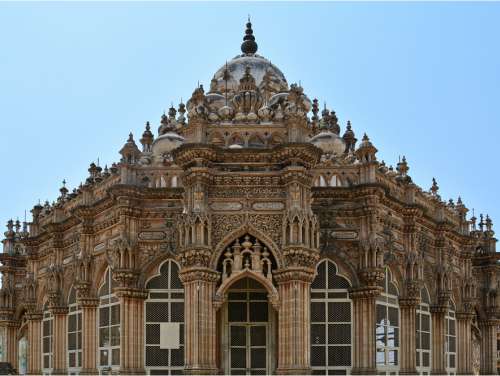
Gujarat India
Adalaj Stepwell or Rudabai Stepwell is a stepwell located in the village of
Gujarat India
Saurashtra peninsula is bound on the south and south-west by the Arabian sea, on the
Gujarat India
Near Rajpipla, 1163 km away up the river from the sea, is Sardar Sarovar dam. At the
Gujarat India
Many great cities of antiquity around the world were the center of their civilization
Gujarat India
Akshardham is majestic, intricately carved stone structure which stands amid sprawling
Gujarat India
The Aina Mahal palace, or “Hall of Mirrors” was built during the flamboyant
Gujarat India
Kalo Dungar calling The Black Hills are 25 kms north of Khavda, the top of the
Gujarat India
Lukshmi Villas Palace, an extravagant building of the Indo-Saracenic school, was built
Gujarat India
The mosque was built in the last year of the existence of Gujarat Sultanate. The
Gujarat India
Vijaya Vilas Palace is the famous one time summer palace of Jadeja Maharao of Cutch
Gujarat India
Sabarmati Ashram (also known as Gandhi Ashram, Harijan Ashram, or Satyagraha Ashram) is
Gujarat India
Vanraj Chavda had founded A?ahilpur Patan in 802 CE as capital of his state. Capital
Gujarat India
Located on the route between Dwarka city and Beyt Dwarka Island on the coast of
Gujarat India
The story behind the 51 Shakti Peethas is rooted in Hindu mythology, specifically in